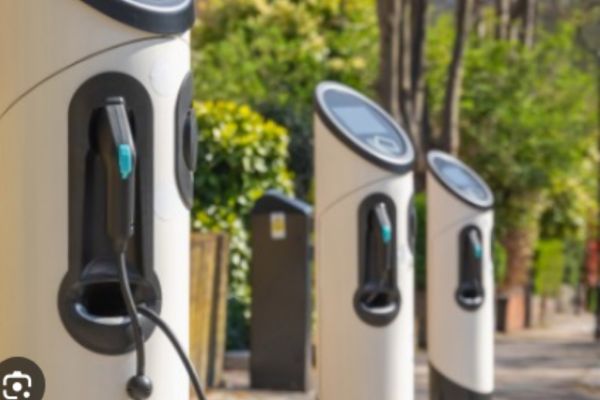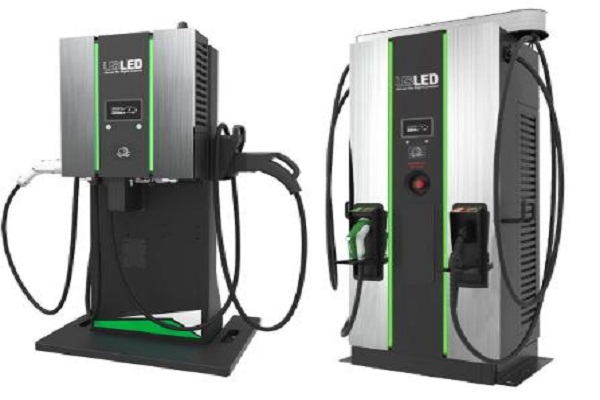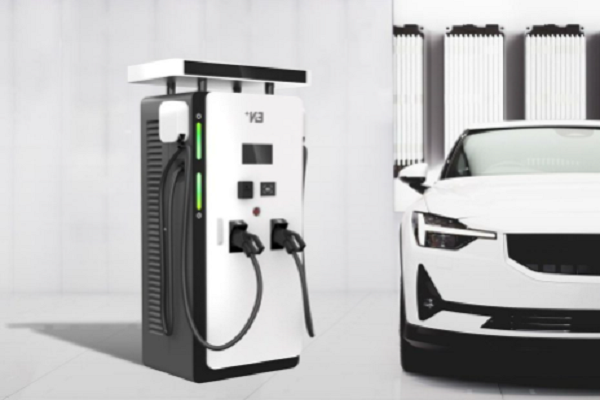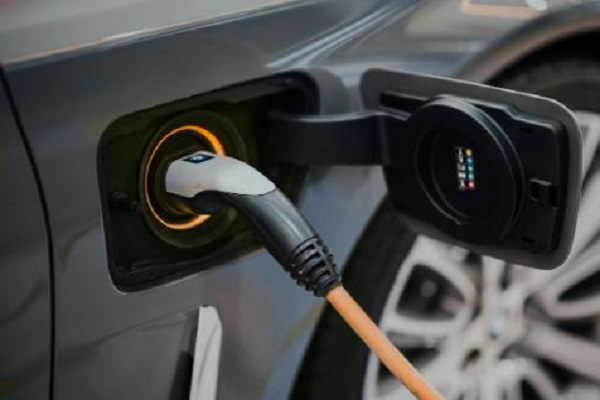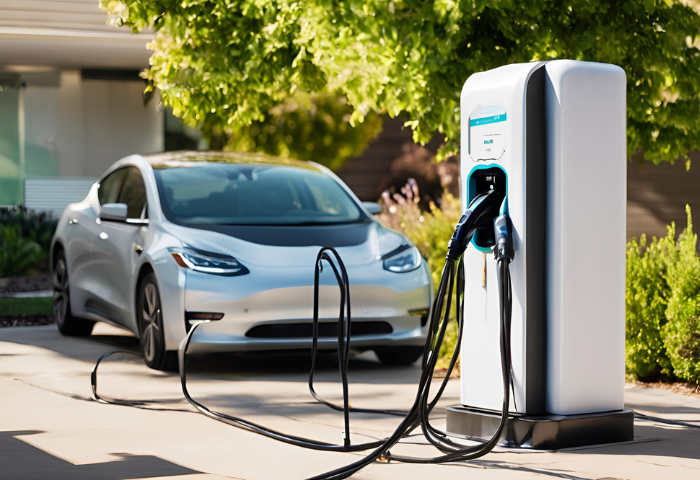DIY Level 3 EV Charger: Save Money & Charge Faster at Home (2024 Guide)
Are you thinking about upgrading your electric vehicle’s charging capabilities without spending a fortune? Building a DIY Level 3 EV charger might be the ideal solution for you. Not only does this save you significant costs compared to commercial options, but it also offers the satisfaction of customizing your charging setup to meet your specific needs.
By taking on the construction of a DIY Level 3 EV charger, you can unlock the potential for rapid charging right in your own home, ensuring your vehicle is always ready to go when you are. Dive into the world of DIY and transform your electric vehicle’s charging experience with your own hands!
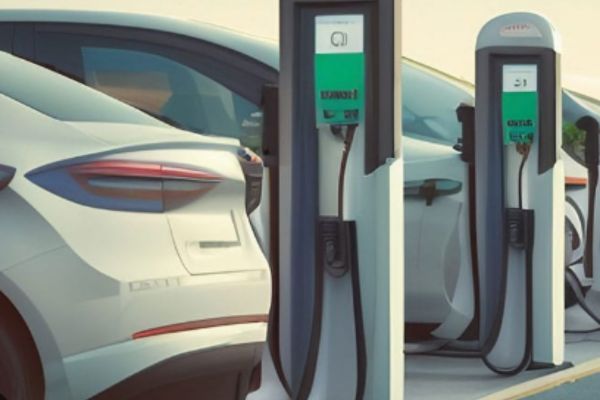
Introduction to DIY Level 3 EV Charging
As electric vehicles (EVs) become more prevalent, the demand for faster and more efficient charging solutions is increasing. One of the most effective solutions is the Level 3 charger, which offers significantly reduced charging times compared to its Level 1 and Level 2 counterparts. This guide explores the possibility of building a DIY Level 3 EV charger, providing you with a hands-on approach to enhance your EV charging capabilities at home.
Understanding EV Charging Levels
Before diving into the construction of a Level 3 charger, it’s crucial to understand the different EV charging levels:
- Level 1 Charging: Utilizes a standard household outlet and typically delivers 2 to 5 miles of range per hour of charging.
- Level 2 Charging: Requires a higher-output 240-volt power source, similar to what powers your dryer or oven, offering about 10 to 60 miles of range per hour.
- Level 3 Charging: Also known as DC fast charging, it is the quickest form, providing up to 100 miles of range in as little as 20 minutes.
Benefits of Level 3 Charging for Electric Vehicles
Level 3 charging is particularly beneficial for EV owners who need quick turnarounds or have limited time to charge. It’s ideal for long-distance travel where time is of the essence, and it ensures that you spend less time waiting for your vehicle to charge and more time on the move.
Safety Considerations for DIY Projects
Building a Level 3 charger involves working with high-voltage systems and complex electrical components, which can be dangerous without the proper knowledge and precautions. It’s essential to understand the risks and ensure that you have adequate safety measures in place, such as using the correct protective equipment and adhering to local electrical codes and standards.
Overview of the Required Tools and Components
Building a DIY Level 3 EV charger requires specialized tools and components capable of handling high voltage and current. These include heavy-duty wiring, circuit breakers, and connectors, all designed for high-performance requirements. You might also need a cooling system to manage the heat from rapid charging. Understanding electrical systems deeply is crucial, and seeking professional guidance is strongly recommended for a successful build. This setup ensures safety and efficiency in your DIY project, allowing your electric vehicle to charge quickly and reliably.
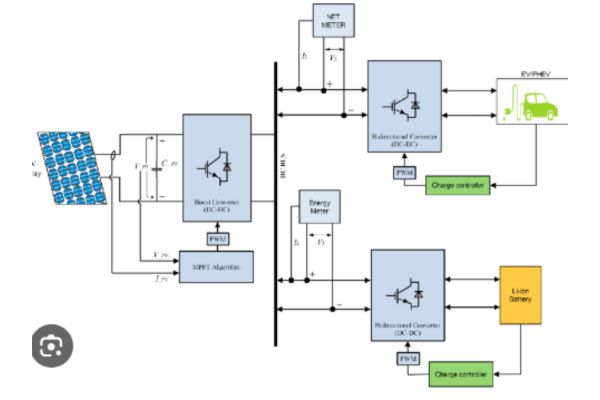
Designing a Level 3 EV Charger
Designing a Level 3 EV charger requires a robust understanding of electrical engineering principles and careful consideration of safety and efficiency. This section outlines the key steps involved in designing your own charger, from schematics to software integration.
Schematic Design and Circuit Basics
Start with a clear and accurate schematic design. This diagram will serve as the blueprint for your charger, detailing all electrical connections and components. Key elements to include are the power input, control mechanisms, and the charging interface that connects to your EV. Make sure to factor in appropriate safety features like circuit breakers and emergency shut-offs.
Selecting the Right Components
The heart of your charger will be the power electronics. This likely involves a high-voltage rectifier to convert AC input to DC, a DC-DC converter to regulate the output voltage, and safety features like fuses and overcurrent protection. Choosing the right components depends on factors like your desired output power and the specific EV charging standard you’ll be following (e.g., CCS Combo).
Software requirements and programming
Modern Level 3 chargers often involve some level of control and communication. This might require a microcontroller unit (MCU) and programming to manage communication with the EV and ensure proper charging protocols are followed.
Power Supply and Voltage Considerations
For a Level 3 charger, a robust power supply is essential. These chargers require a connection to a high-voltage supply, typically between 400 and 900 volts. Ensure your design can handle the input power requirements safely and efficiently. Additionally, the design must comply with local utility regulations and standards for power systems, which might require professional assessment or certification.
By following these guidelines, you can design a functional and safe Level 3 EV charger that offers quick charging capabilities for your electric vehicle. Always prioritize safety and efficiency throughout the design process to ensure reliable operation and protection for both the user and the electrical grid.
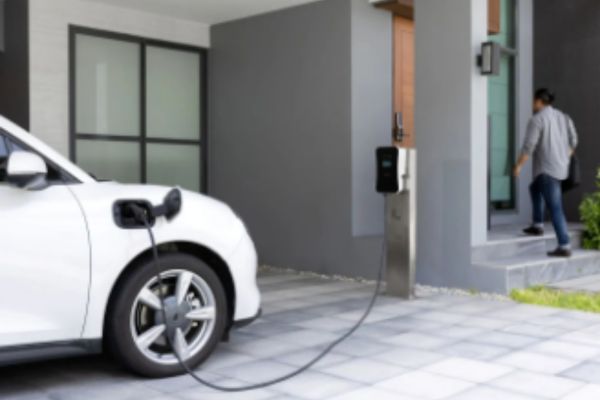
Building the charger
We’ve covered safety, tools, and design. Now comes the most exciting (and potentially intimidating) part: building your DIY Level 3 EV charger! Remember, this section is for informational purposes only, and attempting this project without proper electrical knowledge and qualifications is extremely dangerous.
Step-by-Step Assembly Guide
- Gather Materials and Tools: Before you start, ensure you have all necessary components and tools laid out. This includes cables, connectors, circuit breakers, an enclosure, and testing equipment.
- Assembly of Components: Begin by mounting the main components, such as the inverter, control unit, and cooling system, onto a mounting plate or directly inside your chosen enclosure.
- Connect the Components: Follow your schematic design to connect all the components. This includes connecting input and output wires, grounding the system, and attaching sensors and controls to the control unit.
Wiring and electrical connections
- Power Connections: Carefully connect the power inputs from your high-voltage source to the inverter. Use cables that are rated for high voltage and current to avoid overheating and potential fire hazards.
- Control Wiring: Connect any low-voltage controls, including your user interface and safety mechanisms. Make sure these connections are secure and well-insulated.
- Safety Systems: Install circuit breakers and emergency shut-off switches to protect against electrical failures. These should be easily accessible and clearly marked.
Enclosure and Physical Assembly
- Choosing an Enclosure: Select an enclosure that is robust and rated for outdoor use if the charger will be exposed to the elements. It should have adequate space for all components and cooling systems.
- Assembly: Install all components into the enclosure, ensuring that there is sufficient space for air circulation to prevent overheating. Secure all parts firmly to avoid movement that could lead to loose connections.
- Ventilation: Make sure the enclosure has proper ventilation to allow for heat dissipation. If necessary, install additional fans or heat sinks.
Testing for Functionality and Safety
- Initial Testing: Power up the charger using a controlled and limited power setting to test basic functionality. Check that all displays and controls are operating as expected.
- Safety Checks: Perform detailed safety checks, including testing the emergency shut-off and circuit breakers. Ensure all safety mechanisms are functional and responsive.
- Load Testing: Finally, conduct a load test by charging an actual vehicle. Monitor the charger’s performance, focusing on its ability to manage heat, maintain steady voltage output, and safely deliver high currents.
Remember: This information is for educational purposes only. Unless you are a qualified electrician with experience in high-voltage systems, do not attempt the wiring and electrical connections yourself.
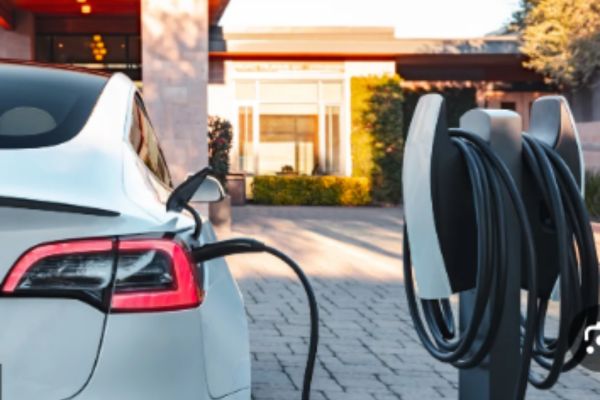
Installation and Setup
Installing and setting up your DIY Level 3 EV charger is a critical step towards enjoying fast and efficient charging for your electric vehicle. This section covers key considerations for choosing the installation site, integrating with your home’s electrical infrastructure, and enhancing user accessibility.
Choosing the Installation Site
- Accessibility: Select a location that is easily accessible for both you and your vehicle. Ensure there is ample space around the charger for maneuvering and cable management.
- Protection from Elements: Ideally, install the charger in a sheltered area to protect it from rain, snow, and direct sunlight. If outdoor installation is necessary, consider weatherproofing measures or investing in an outdoor-rated enclosure.
- Ventilation: Choose a location with adequate ventilation to prevent overheating during charging. Avoid enclosed spaces or areas with restricted airflow.
Electrical infrastructure requirements
- Power Supply: Ensure your chosen installation site has access to a high-voltage power supply compatible with Level 3 charging. Consult with a qualified electrician to verify the availability and capacity of your electrical service.
- Circuit Capacity: Determine if your home’s electrical system can support the additional load of the Level 3 charger. Upgrading your electrical panel or circuits may be necessary to accommodate the charger’s power requirements.
- Safety Considerations: Install appropriate circuit protection devices, such as dedicated circuit breakers and surge suppressors, to safeguard against electrical faults and overloads.
Integration with Home Energy Systems
- Solar Integration: If you have a solar energy system, consider integrating your EV charger to maximize renewable energy usage. Install a dedicated circuit for the charger connected to your solar inverter to charge your EV directly from solar power.
- Battery Storage: Explore options for integrating battery storage systems with your EV charger to store excess solar energy for later use. This setup can help reduce grid dependence and further lower your energy costs.
User Interface and Accessibility Features
- User-Friendly Design: Design the charger’s user interface to be intuitive and easy to use, with clear instructions and visual indicators of charging status.
- Accessibility: Consider incorporating accessibility features such as larger buttons, tactile feedback, and audible alerts to accommodate users with different abilities.
- Remote Monitoring: Implement remote monitoring capabilities to allow users to check charging status and control settings from their smartphones or computers. This feature enhances convenience and flexibility for EV owners.
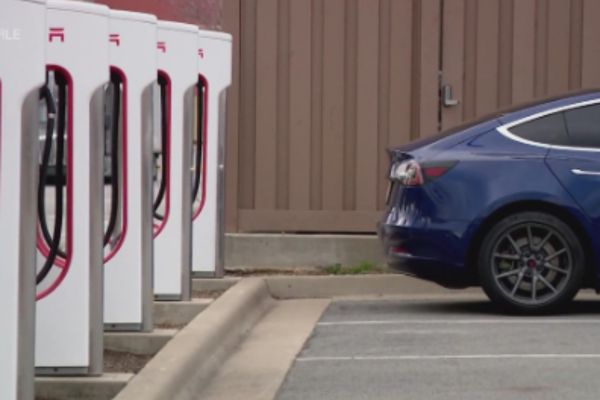
Regulatory Compliance and Certification
Ensuring regulatory compliance and obtaining necessary certifications are crucial steps in the installation and operation of your DIY Level 3 EV charger. This section outlines key considerations for adhering to national and local regulations, including the National Electrical Code (NEC) requirements and the certification process for EV chargers.
Understanding National Electrical Code (NEC) Requirements
The National Electrical Code (NEC) serves as the national benchmark for electrical safety. Understanding its guidelines is crucial for a compliant and secure Level 3 EV charger installation.
- Safety First: Stay up-to-date. Familiarize yourself with the most recent edition of the NEC, ensuring you follow the latest safety standards and installation best practices.
- Wiring Wisdom: The NEC outlines specific requirements for wiring practices, grounding, bonding, and protection against electrical hazards. Following these guidelines safeguards your charger installation and prevents potential electrical issues.
- Space for Safety: The NEC dictates clearances around electrical equipment. Maintaining these clearances ensures safe operation and allows for easy access for maintenance and inspection purposes.
Obtaining Necessary Permits and Inspections
Taking the proper steps to obtain permits and inspections is vital for a lawful and safe Level 3 EV charger installation.
- Permit Power: Don’t skip this step! Contact your local building department to understand the specific permitting requirements for EV charger installations in your area. Obtain all necessary permits before starting construction.
- Inspection Ready: Schedule inspections with the relevant authorities at key stages of the installation process. This typically involves inspections before concealing wiring and after completing the entire installation. Inspections verify your charger meets code requirements and is safe for use.
EV charger certification processes
When it comes to Level 3 EV charger installations, safety should be your top priority. Here’s how navigating the certification landscape can ensure a secure setup:
- UL Listed for Confidence: Consider seeking certification from Underwriters Laboratories (UL), a respected safety certification organization. UL certification provides independent verification that your charger meets rigorous safety and performance standards.
- Manufacturer Matters: Verify that any pre-built parts or kits you use have the manufacturer’s certification for use with EV charging. This ensures the individual parts are compatible and meet safety guidelines.
- DIY Considerations: In some areas, building your own EV charger might require certification or approval from local regulatory authorities. Research the specific requirements in your jurisdiction and consult with qualified professionals to understand the certification process for DIY chargers.
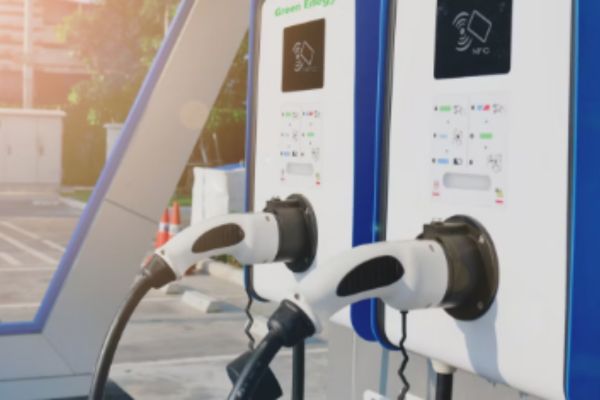
Ensuring Compliance with Local and Federal Regulations
- Local Regulations: Familiarize yourself with local building codes, zoning ordinances, and permitting requirements that may apply to EV charger installations in your area.
- Federal Regulations: Stay informed about federal regulations related to EV charging infrastructure, such as tax incentives or rebates for installing EV chargers at residential properties.
- Accessibility Requirements: Ensure that your charger installation complies with accessibility requirements, including provisions for disabled access and signage as mandated by the Americans with Disabilities Act (ADA).
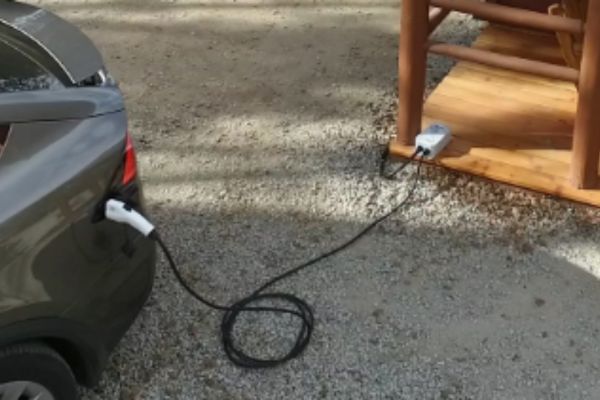
Troubleshooting and maintenance
Maintaining your DIY Level 3 EV charger ensures reliable performance for your electric vehicle. This section covers troubleshooting common issues, scheduling maintenance, upgrading components, and accessing technical support resources.
Common Issues and Solutions
- Faulty Connections: Check for loose or corroded connections in wiring and terminals. Tighten connections and replace damaged components.
- Overheating: Monitor charger temperature during operation, ensuring proper ventilation and installing additional cooling if needed.
- Software Glitches: Reset or update firmware to address charging errors or communication issues.
- Power Supply Problems: Verify a stable power supply and address fluctuations promptly.
Maintenance Schedule and Best Practices
- Regular Inspections: Check charger components routinely for wear or damage.
- Cleaning: Keep the charger and surroundings clean for optimal airflow and cooling.
- Testing: Periodically test voltage and current output for performance.
- Component Replacement: Replace worn parts promptly to maintain reliability.
Upgrading charger firmware and components
Technology is constantly evolving, and your Level 3 EV charger is no exception. Here’s how to stay ahead of the curve:
- Firmware First: Don’t miss a beat! Stay informed about firmware updates released by the manufacturer. These updates can enhance your charger’s performance, introduce new features, and squash any pesky bugs.
- Component Considerations: As technology advances, consider upgrading critical parts of your charger to improve efficiency and reliability. Consult a qualified electrician to determine if upgrades are suitable for your specific charger model.
- Technical support and community forums
- Manufacturer Support: Contact the manufacturer or distributor for troubleshooting and maintenance guidance.
- Online Forums: Engage in EV charging communities for advice and support from fellow enthusiasts.
Energy Management and Efficiency
Efficient energy management is crucial for maximizing the performance and longevity of your DIY Level 3 EV charger. This section explores strategies for optimizing charging efficiency, integrating renewable energy sources, preserving battery health, and managing costs effectively.
Maximizing charging efficiency
- Smart Charging Algorithms: Implement intelligent charging algorithms that optimize charging schedules based on energy demand and grid conditions, reducing peak loads and maximizing efficiency.
- Load Balancing: Utilize load balancing techniques to distribute charging demand evenly across multiple charging stations, minimizing strain on the electrical grid and reducing energy costs.
- Vehicle-to-Grid (V2G) Integration: Explore V2G technology, which enables bidirectional energy flow between EV batteries and the grid, allowing EVs to serve as energy storage devices and participate in demand response programs.
Integrating renewable energy sources
- Solar PV Systems: Install solar photovoltaic (PV) panels to generate clean, renewable energy for charging your EV. Size the PV system appropriately to meet your charging needs, and consider incorporating energy storage solutions for increased autonomy.
- Wind Power: Explore the possibility of harnessing wind energy to supplement your charging needs, especially in regions with favorable wind conditions. Wind turbines can complement solar PV systems and provide additional renewable energy generation.
- Hydroelectric Power: In areas with access to flowing water, consider integrating micro-hydroelectric systems to generate clean energy for charging your EV. Micro-hydro systems can be cost-effective and environmentally friendly alternatives to traditional grid electricity.
Battery health and longevity
- Optimized Charging Profiles: Follow manufacturer recommendations for charging profiles to preserve battery health and extend longevity. Avoid frequent deep discharges and limit exposure to high temperatures, which can degrade battery performance over time.
- Battery Management Systems (BMS): Implement BMS technology to monitor battery health, manage charging parameters, and prevent overcharging or undercharging, ensuring optimal performance and safety.
- Scheduled Maintenance: Conduct regular maintenance checks on your EV battery to detect any signs of degradation or malfunction early. Address issues promptly to prevent further deterioration and extend the lifespan of your battery pack.
Cost management and savings
- Time-of-Use (TOU) Pricing: Take advantage of TOU pricing plans offered by utilities to charge your EV during off-peak hours when electricity rates are lower. Schedule charging sessions to coincide with periods of reduced demand to minimize energy costs.
- Energy Efficiency Upgrades: Invest in energy-efficient appliances and lighting for your home to reduce overall energy consumption and lower electricity bills. Implementing energy-saving measures can offset the cost of charging your EV and increase long-term savings.
- Financial Incentives: Research available incentives, rebates, and tax credits for EV charging infrastructure installations and renewable energy systems. Take advantage of government programs and utility incentives to offset upfront costs and maximize savings.
Smart Charging Technologies
Efficient charging is key to maximizing your DIY Level 3 EV charger’s performance. This section delves into smart charging technologies, including integration with smart home systems, real-time monitoring, remote control, scheduling, and dynamic load balancing.
Integration with Smart Home Systems
- Seamless Integration: Ensure your DIY Level 3 EV charger can seamlessly integrate with popular smart home platforms like Google Home or Amazon Alexa. This enables convenient voice control and monitoring of charging status from your smart devices.
- Automated Charging: Take advantage of automation features to schedule charging sessions during off-peak hours or when renewable energy generation is highest, optimizing energy usage and minimizing costs.
- Energy Management: Integrate your EV charger with smart energy management systems to monitor overall energy consumption in your home and adjust charging settings dynamically based on available capacity and grid demand.
Real-Time Charging Data Monitoring
- Charging Status Updates: Utilize real-time monitoring capabilities to track the progress of charging sessions, receive alerts for completed charges, and monitor energy consumption directly from your smartphone or computer.
- Energy Usage Insights: Gain valuable insights into your EV’s energy consumption patterns and charging behavior over time. Use this data to optimize charging schedules, identify potential efficiency improvements, and track energy savings.
Remote control and scheduling
- Remote Access: Enjoy the convenience of controlling your DIY Level 3 EV charger remotely, allowing you to start, stop, or adjust charging settings from anywhere with an internet connection.
- Customizable Scheduling: Create personalized charging schedules tailored to your specific needs and preferences. Set recurring charging sessions, prioritize charging during low-demand periods, and adjust settings on the fly to accommodate changes in your schedule.
Dynamic load balancing
- Optimized Charging: Implement dynamic load balancing algorithms that automatically adjust charging rates based on real-time grid conditions and household energy usage. This helps prevent overloading circuits and ensures efficient use of available electrical capacity.
- Grid Integration: Contribute to grid stability and reliability by participating in demand response programs and providing grid services through dynamic load management. By adjusting charging rates in response to grid signals, you can help balance supply and demand and support the integration of renewable energy resources.
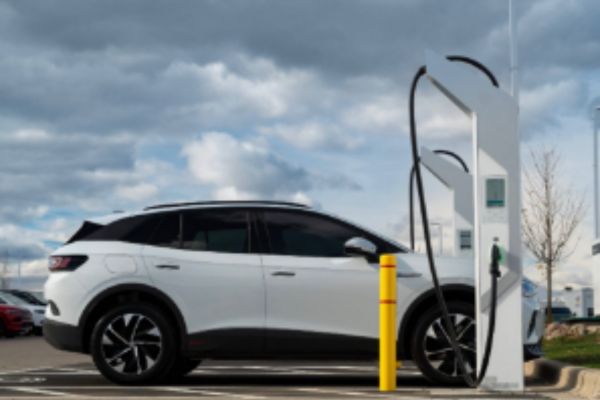
Environmental Impact and Sustainability
Addressing the environmental impact of electric vehicles (EVs) and their charging infrastructure is crucial for promoting sustainability. This section explores ways to reduce carbon footprints, recycle EV charging components, promote sustainable transportation, and support renewable energy adoption.
Reducing carbon footprints with EVs
- Emissions Reduction: Transitioning from conventional vehicles to EVs significantly reduces greenhouse gas emissions, as EVs produce zero tailpipe emissions during operation.
- Lifecycle Analysis: Consider the lifecycle environmental impacts of EVs, including manufacturing, charging, and disposal, to accurately assess their overall environmental footprint.
- Renewable Energy Integration: Pairing EVs with renewable energy sources further reduces carbon emissions associated with charging, contributing to overall environmental sustainability.
Recycling and Disposal of EV Charging Components
- Component Recycling: Properly recycle end-of-life EV charging components, including batteries, wiring, and electronic control units, to recover valuable materials and minimize environmental impact.
- Responsible Disposal: Dispose of EV charging components responsibly to prevent hazardous waste contamination and ensure compliance with environmental regulations.
- Manufacturer Takeback Programs: Participate in manufacturer takeback programs that facilitate the return and recycling of used EV charging equipment, promoting circular economy principles and resource conservation.
Contribution to Sustainable Transportation
- Reduced Air Pollution: EVs reduce air pollution in urban areas by eliminating tailpipe emissions, improving air quality, and mitigating health risks associated with vehicle exhaust.
- Noise Pollution Reduction: Electric propulsion systems produce less noise than internal combustion engines, contributing to quieter and more livable urban environments.
- Promotion of Public Transit: EV adoption complements public transit initiatives by providing clean and efficient transportation options, reducing reliance on fossil fuel-powered vehicles, and promoting sustainable mobility solutions.
Impact on the Electrical Grid and Renewable Energy Adoption
- Grid Integration: EV charging infrastructure can support grid stability and renewable energy integration through smart charging technologies, load management, and demand response programs.
- Vehicle-to-Grid (V2G) Integration: Explore opportunities for V2G integration, allowing EV batteries to store excess renewable energy and discharge it back to the grid during periods of high demand, enhancing grid reliability and resilience.
- Renewable Energy Adoption: EV charging facilities can serve as hubs for renewable energy adoption, providing opportunities for on-site solar PV installations, wind power generation, and energy storage deployment.
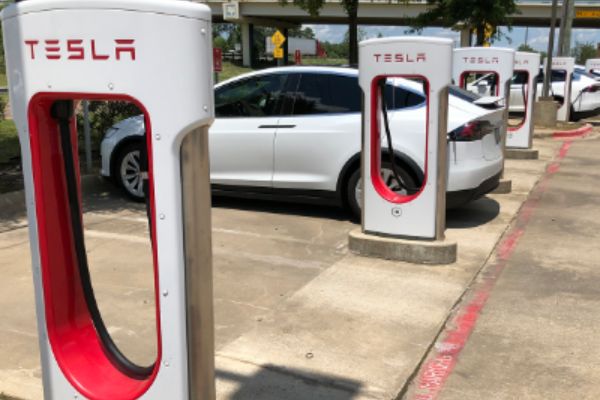
Advancing DIY EV Charger Projects
The DIY community plays a vital role in driving innovation and expanding accessibility in electric vehicle (EV) charging technology. This section explores advancements, innovations, and collaborative efforts within the realm of DIY EV charger projects.
Innovations in DIY EV Charger Technology
- Open-Source Platforms: Open-source initiatives have democratized EV charger development by providing accessible designs, software, and documentation for DIY enthusiasts. These platforms encourage collaboration, innovation, and knowledge sharing within the DIY community.
- Modular Designs: Modular EV charger designs allow for easy customization and scalability, accommodating a wide range of vehicle types, charging speeds, and power requirements. Modular components simplify assembly, maintenance, and upgrades, empowering DIYers to tailor their chargers to specific needs.
- Smart Charging Features: DIY EV chargers are incorporating smart charging features such as Wi-Fi connectivity, smartphone integration, and real-time data monitoring. These innovations enhance user convenience, energy efficiency, and grid integration, paving the way for more intelligent and sustainable charging solutions.
Collaborations and community projects
- Hackathons and Workshops: Collaborative events such as hackathons and workshops bring together DIY enthusiasts, engineers, and industry professionals to ideate, prototype, and refine innovative EV charging solutions. These events foster creativity, networking, and skill-building within the DIY community.
- Online Forums and Communities: Online forums and community platforms provide spaces for DIYers to share knowledge, troubleshoot challenges, and showcase their projects. These virtual communities facilitate collaboration, peer support, and collective learning, accelerating the pace of innovation in DIY EV charger projects.
- Open Hardware Projects: Open hardware initiatives, such as the OpenEVSE project, encourage collaboration and standardization in DIY EV charger development. By sharing hardware designs, firmware code, and best practices, these projects empower DIYers to build high-quality, affordable EV charging solutions.
By embracing innovation, collaboration, and community engagement, DIY EV charger projects are driving forward the accessibility, affordability, and sustainability of electric vehicle charging infrastructure. As the DIY movement continues to evolve, so too will the ingenuity and impact of DIY EV charger projects on the transition to clean transportation.

Henry Michael is a leading expert in EV charging station research, specializing in innovative solutions for electric vehicle infrastructure. With a passion for sustainability and technological advancement, he is dedicated to advancing the accessibility and efficiency of EV charging worldwide.

